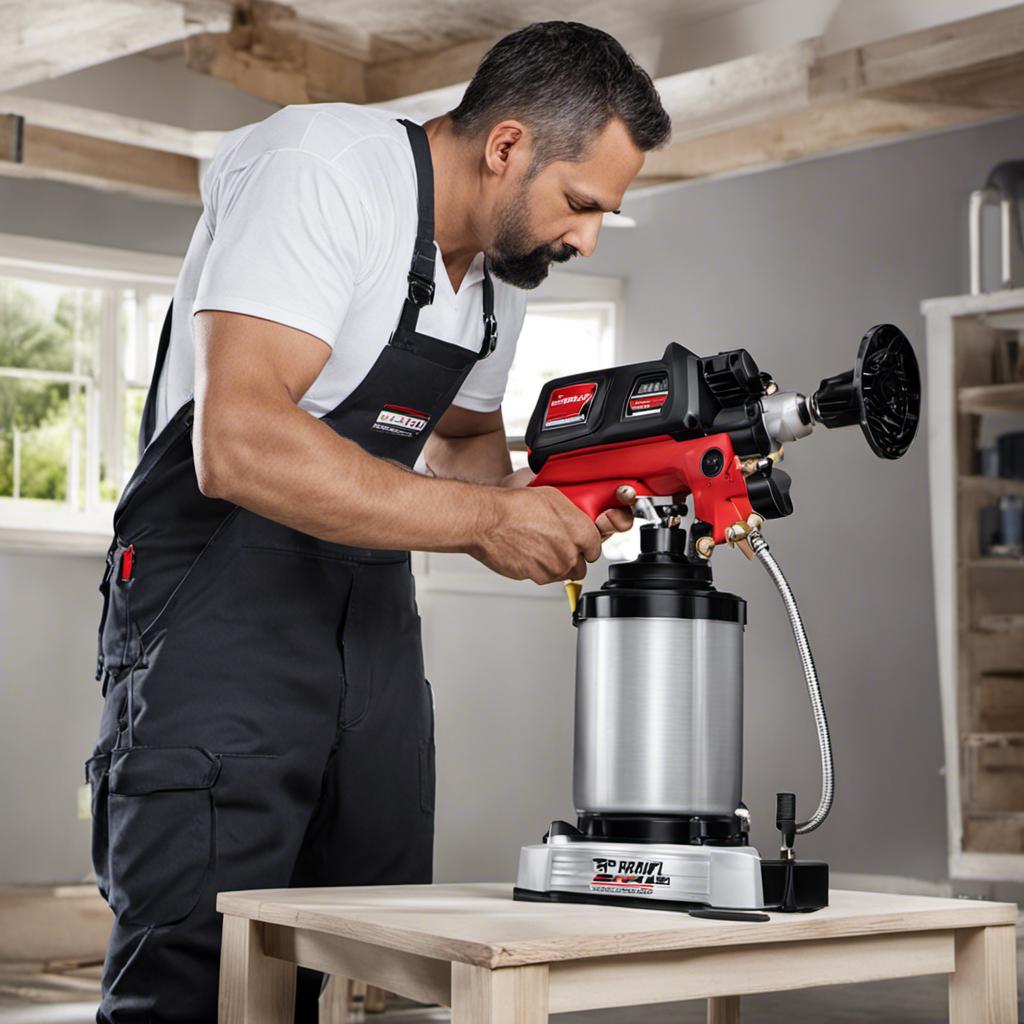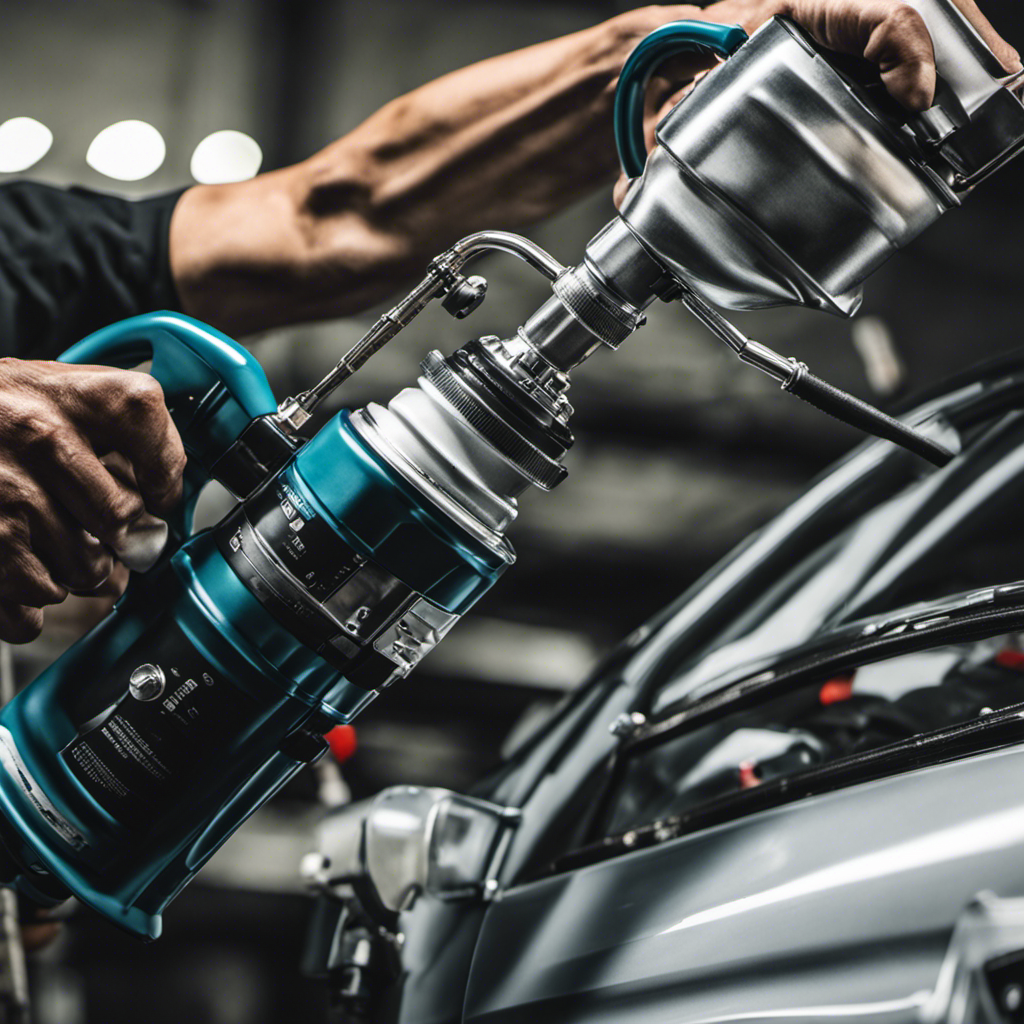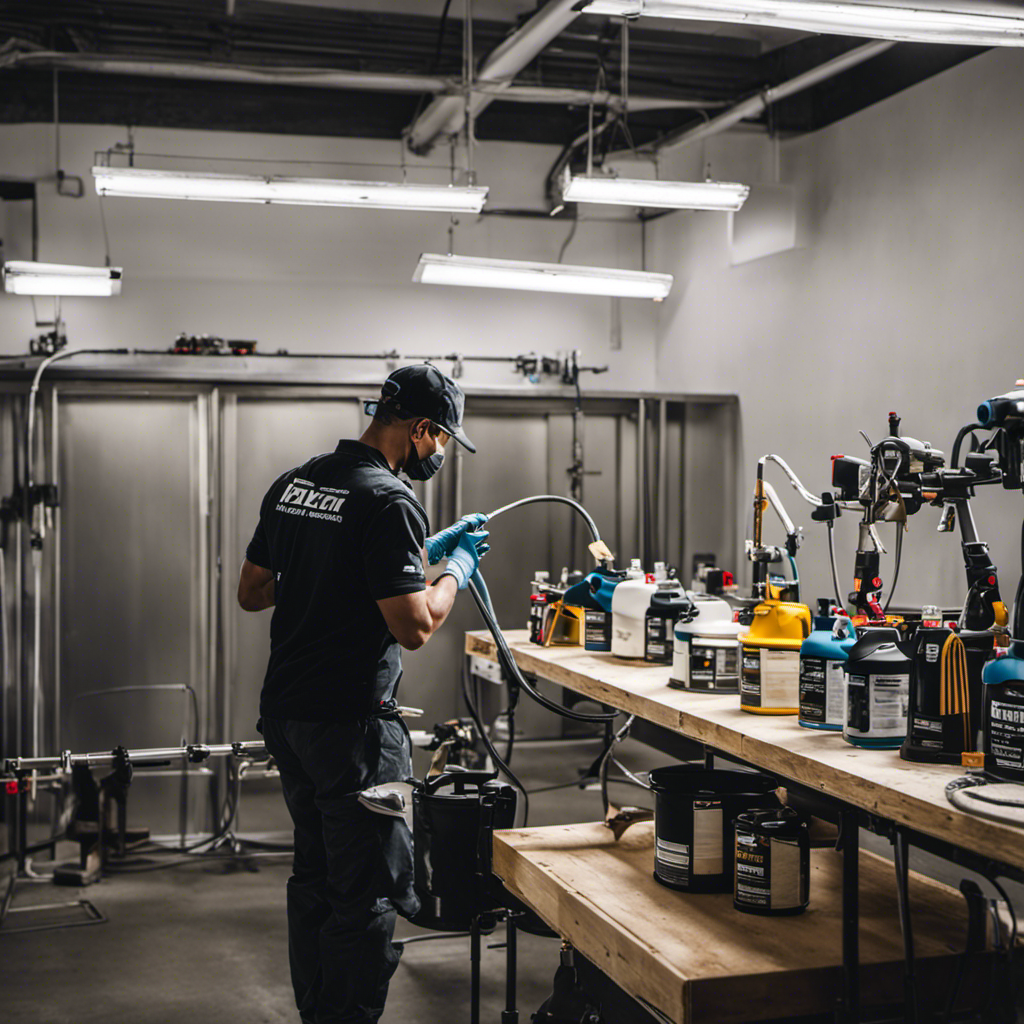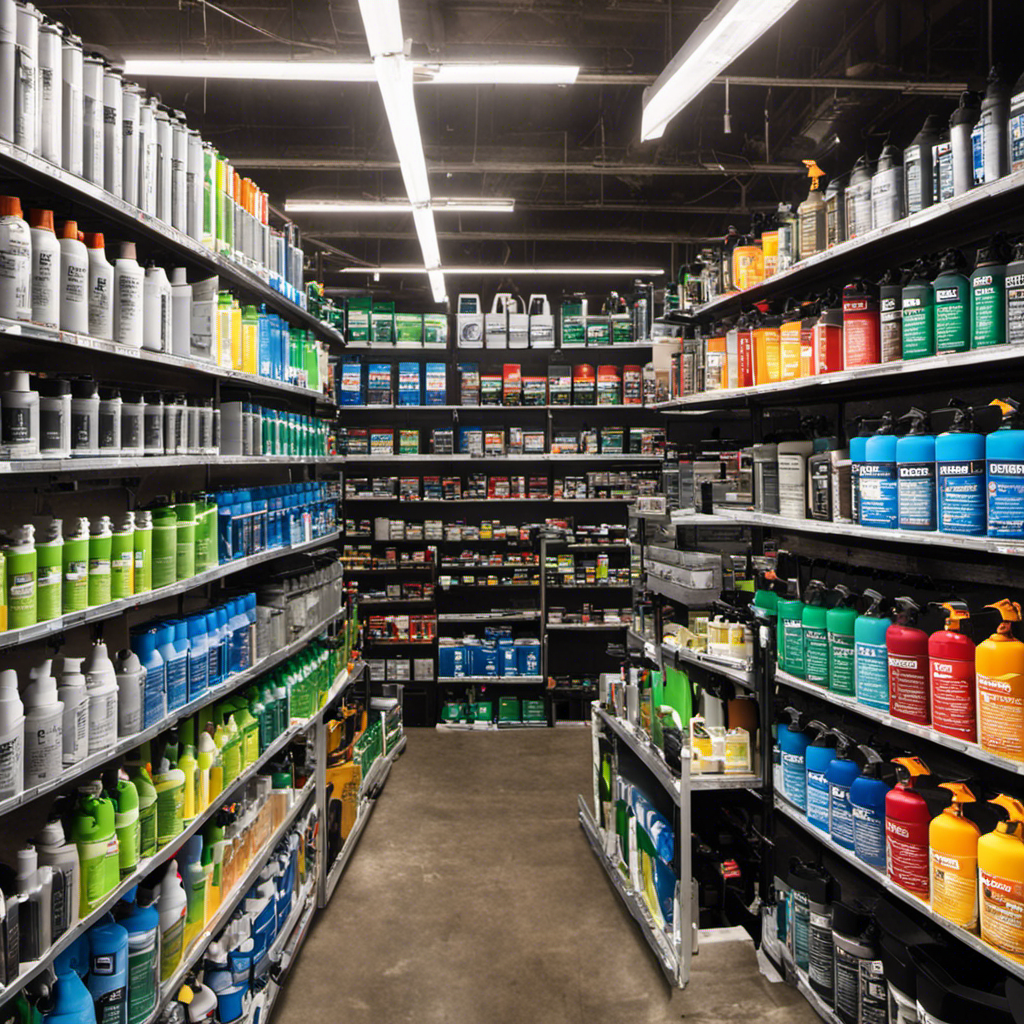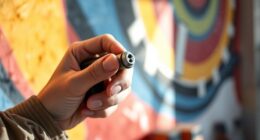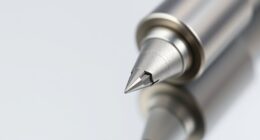It is essential to winterize your airless paint sprayer to maximize its performance and extend its lifespan. Following a few easy steps can help keep your sprayer in excellent condition throughout the winter months.
From cleaning and inspecting to proper storage and organization, this article will guide you through the process of winterizing your paint sprayer. By taking the time to prepare your sprayer for winter, you’ll save time, money, and frustration down the line.
So let’s dive in and discover the maintenance and storage tips that will keep your airless paint sprayer running smoothly all winter long.
Key Takeaways
- Clean the hose and gun with warm soapy water and remove excess paint and debris
- Store the sprayer in a dry and temperature-controlled area, covering it with plastic wrap or a plastic bag during winter storage
- Check for leaks or damage, tighten loose parts, and replace worn gaskets or damaged components
- Regularly lubricate the moving parts with a high-quality lubricant to prevent rust and corrosion and maintain optimal performance.
Cleaning and Maintenance Steps for Winterizing an Airless Paint Sprayer
The user should clean the hose and gun with warm soapy water and remove any excess paint and debris to properly winterize their airless paint sprayer. This step is crucial in ensuring the longevity and optimal performance of the equipment.
By cleaning the hose and gun thoroughly, the user can prevent clogs and blockages that may occur during storage. Additionally, removing any excess paint and debris will prevent them from hardening and causing damage to the internal components of the sprayer.
Regular maintenance is important for airless paint sprayers as it helps to maintain their efficiency and functionality. By following these cleaning and maintenance steps, users can ensure that their airless paint sprayer is well-prepared for winter storage and will be ready to use again in the next painting season.
Proper Storage and Organization Techniques
To properly store and organize an airless paint sprayer, one should use hooks or hangers to keep accessories off the ground. This not only helps prevent tangling and damage to the accessories but also ensures easy access when needed.
It is important to store the sprayer in a dry and temperature-controlled area to protect it from extreme temperatures and humidity. Additionally, covering the sprayer with plastic wrap or a plastic bag during winter storage can provide an extra layer of protection against dust and moisture.
Labeling the sprayer and its parts can help in easy identification and prevent any confusion.
Preventing Leaks and Damage
One effective way to prevent leaks and damage is by regularly inspecting and maintaining the nozzle and spray tip.
To ensure the proper functioning of your airless paint sprayer, it is crucial to follow a comprehensive inspection checklist.
Start by checking for any visible leaks or damage to the nozzle and spray tip. Tighten any loose parts and replace worn gaskets or damaged components.
Inspect the nozzle for any clogs or debris that may affect the spray pattern. Clean or replace the nozzle if necessary.
Additionally, ensure that the spray tip is in good condition, without any cracks or wear.
If any issues are identified during the inspection, promptly repair or replace the damaged components to maintain the optimal performance of your airless paint sprayer.
Benefits of Winterization
Regular winterization of an airless paint sprayer ensures optimal performance in the next painting season and extends the lifespan of the equipment. One important aspect of winterization is using protective covers. These covers shield the sprayer from dust, moisture, and other potential damage during storage.
Additionally, following a winter maintenance checklist is crucial. This checklist includes cleaning the hose and gun with warm soapy water, removing excess paint and debris, inspecting for damage, and flushing out any remaining paint from the system. It is also important to clean and maintain filters regularly.
Lubricating Moving Parts for Optimal Performance
Applying a high-quality lubricant to the moving parts of the airless paint sprayer helps prevent rust and corrosion, ensuring optimal performance. When it comes to choosing the right lubricant, it is important to select a specialized product specifically designed for airless paint sprayers.
These lubricants are formulated to withstand the demanding conditions of paint spraying and provide long-lasting protection. Before applying the lubricant, it is recommended to check and clean the moving parts to remove any dirt or debris that could hinder their performance.
Once the parts are clean, simply apply a thin layer of lubricant to the piston rod and packings, ensuring that all areas are adequately coated. Regular maintenance and lubrication of the moving parts will help maintain the efficiency and functionality of the airless paint sprayer, ultimately saving both time and money by preventing damage and breakdowns.
Cleaning the Hose and Gun With Warm Soapy Water
To clean the hose and gun of an airless paint sprayer, the user should use warm soapy water for effective and thorough cleaning. This method helps to remove any paint residue or debris that may have accumulated during the spraying process.
Here are four alternative cleaning techniques that can be used in conjunction with warm soapy water:
-
Use a soft brush or cloth to scrub the surfaces of the hose and gun, paying special attention to any stubborn stains or buildup.
-
For tougher stains, consider using a mild solvent or paint thinner to dissolve the paint before cleaning with warm soapy water.
-
If the hose and gun are heavily clogged, try using a high-pressure washer or compressed air to forcefully remove any blockages.
-
After cleaning, thoroughly rinse the hose and gun with clean water to ensure that all soap residue is removed.
Removing Excess Paint and Debris
After completing the cleaning process, the user should remove any excess paint and debris from the hose and gun of the airless paint sprayer. This step is essential to ensure the smooth and efficient operation of the sprayer during the next painting session.
To remove paint residue, the user can use a clean cloth or rag to wipe away any remaining paint on the surface of the hose and gun. It is important to be thorough and remove all traces of paint to prevent clogging and blockages in the nozzle.
Additionally, cleaning the paint sprayer nozzles is crucial to maintain their performance. The user should carefully remove the nozzles and soak them in warm soapy water to remove any paint or debris that may have accumulated. Afterward, they should rinse the nozzles thoroughly and ensure they are completely clean before reattaching them to the sprayer.
Inspecting for Damage
After removing excess paint and debris from the airless paint sprayer, the next step in winterizing is inspecting for damage. This is an important step to ensure that the sprayer is in good working condition and to identify any potential issues before storing it for the winter. Here are four key things to check for during the inspection:
-
Checking for wear and tear: Carefully examine the hose, gun, and other components for any signs of wear, such as cracks, fraying, or leaks. Replace any damaged parts to prevent further issues.
-
Identifying potential issues: Look for any loose connections, broken seals, or damaged filters. These can affect the performance of the sprayer and should be addressed before storage.
-
Inspecting the motor and pump: Check for any unusual noises, vibrations, or overheating during operation. These can indicate internal damage and should be addressed by a professional.
-
Examining the electrical system: Inspect the power cord and plug for any signs of damage. Ensure that the electrical connections are secure and that there are no exposed wires.
Flushing Out Remaining Paint From the System
Flushing out any remaining paint from the system ensures that the airless paint sprayer is properly cleaned and prepared for storage. To remove paint residue, follow these proper disposal techniques.
Start by disconnecting the sprayer from the power source and relieving any pressure in the system.
Next, remove the pump inlet tube and place it in a bucket of water or solvent. Turn on the sprayer and allow it to run until clear liquid comes out of the tube.
Then, remove the spray tip and filter and soak them in the same water or solvent. Use a brush to scrub off any stubborn paint residue.
Finally, rinse all the parts with clean water and dry them thoroughly before storing.
Properly disposing of the paint residue is crucial for environmental safety and compliance with regulations.
Cleaning and Maintaining Filters Regularly
Regularly cleaning and maintaining filters is essential for optimal performance and longevity of the airless paint sprayer. To ensure the best results, here are some important steps to follow:
-
Cleaning and maintenance frequency: Filters should be cleaned after each use to remove paint residue and debris. It is also recommended to inspect and replace filters regularly, depending on the frequency of use and the type of paint being sprayed.
-
Choosing the right filters for your airless paint sprayer: Filters come in different sizes and mesh types to accommodate various paint viscosities and particle sizes. It is important to select the appropriate filter that matches the specific requirements of your paint application.
-
Proper cleaning technique: Filters can be cleaned using warm soapy water or a suitable cleaning solution. Gently scrub the filter to remove any paint or debris, and rinse thoroughly before reinstalling.
-
Inspecting for damage: During the cleaning process, it is crucial to inspect the filters for any signs of damage or wear. Replace any filters that are torn, frayed, or no longer effective in trapping particles.
Storing Accessories Separately
After ensuring the cleanliness and maintenance of your airless paint sprayer, the next step in winterizing is storing the accessories separately. This is crucial for maintaining the efficiency and functionality of the sprayer.
Storing accessories efficiently and organizing them effectively not only prevents damage but also saves time and effort when you need to use them again. To achieve this, consider using hooks or hangers to keep the accessories off the ground and easily accessible.
Additionally, label each accessory for easy identification. By storing the accessories separately, you can prevent tangling and potential damage that may occur when they are stored together.
This simple step will help prolong the lifespan of your airless paint sprayer and ensure a smooth painting process in the future.
Frequently Asked Questions
How Often Should I Winterize My Airless Paint Sprayer?
The frequency at which one should winterize their airless paint sprayer depends on several factors such as climate, usage, and storage conditions. However, as a general rule, it is recommended to winterize the sprayer at the end of each painting season or before prolonged periods of inactivity.
Can I Use Any Type of Lubricant for the Moving Parts of My Sprayer?
Different types of lubricants are suitable for airless paint sprayers. However, it’s best to use a specialized lubricant specifically designed for these types of sprayers. This ensures optimal performance and prevents rust and corrosion on the moving parts.
Regularly checking and lubricating the piston rod and packings is essential for maintaining the efficiency and functionality of the sprayer. By following these best practices, users can save time and money in the long run by preventing damage and breakdowns.
Are There Any Specific Cleaning Products I Should Use to Clean the Hose and Gun?
Cleaning products for the hose and gun of an airless paint sprayer are essential for maintaining its performance. While warm soapy water is effective, there are alternative cleaning methods available.
Specialized cleaning solutions designed for paint equipment can be used to remove stubborn paint residue and ensure a thorough cleaning. It is important to follow the manufacturer’s recommendations for cleaning products and methods to avoid damaging the hose and gun.
Proper cleaning will extend the lifespan of the sprayer and ensure optimal painting results.
What Should I Do if I Notice a Leak in My Airless Paint Sprayer?
If a leak is noticed in an airless paint sprayer, immediate action should be taken to prevent further damage.
Begin by turning off the sprayer and relieving any pressure.
Next, inspect the sprayer for loose fittings or damaged seals.
Tighten any loose parts and replace any worn gaskets or damaged components.
It is important to address leaks promptly to maintain the efficiency and functionality of the sprayer, preventing costly breakdowns and ensuring optimal performance.
Is It Necessary to Cover the Sprayer With Plastic Wrap or a Plastic Bag During Winter Storage?
Covering the sprayer with plastic wrap or a plastic bag during winter storage is indeed necessary to protect it from dust, moisture, and potential damage.
However, there are alternative options available. One could use a fitted cover specifically designed for airless paint sprayers or utilize a storage cabinet or container.
These alternatives provide additional protection and ensure the sprayer remains in good condition during the winter months.
It is essential to choose the option that best suits one’s needs and environment.
Conclusion
In conclusion, winterizing your airless paint sprayer is a crucial step in maintaining its optimal performance and extending its lifespan. By following the proper cleaning and maintenance steps, storing the sprayer correctly, and preventing leaks and damage, you can ensure that your paint sprayer is ready to use when the winter season is over.
Additionally, lubricating the moving parts and inspecting for any damage will further enhance the efficiency and functionality of the sprayer. By taking these measures, you can save time and money on repairs while protecting your investment.
Don’t forget to clean and maintain filters regularly and store accessories separately for easy access. Winterizing your airless paint sprayer is a necessary process that will benefit you in the long run.
Drenched in creativity and armed with a fountain pen, Isolde weaves words as gracefully as a painter strokes their canvas. A writer for Paint Sprayer Zone, her passion for colors, textures, and spaces finds a harmonious blend with her profound knowledge of painting tools and techniques.
Having grown up in a family of artists, Isolde’s tryst with paints began early. While her relatives expressed themselves on canvas, Isolde found her medium in words. She dedicated herself to chronicling the world of painting, understanding the nuances of each tool, and the artistry behind every spritz of a paint sprayer.

